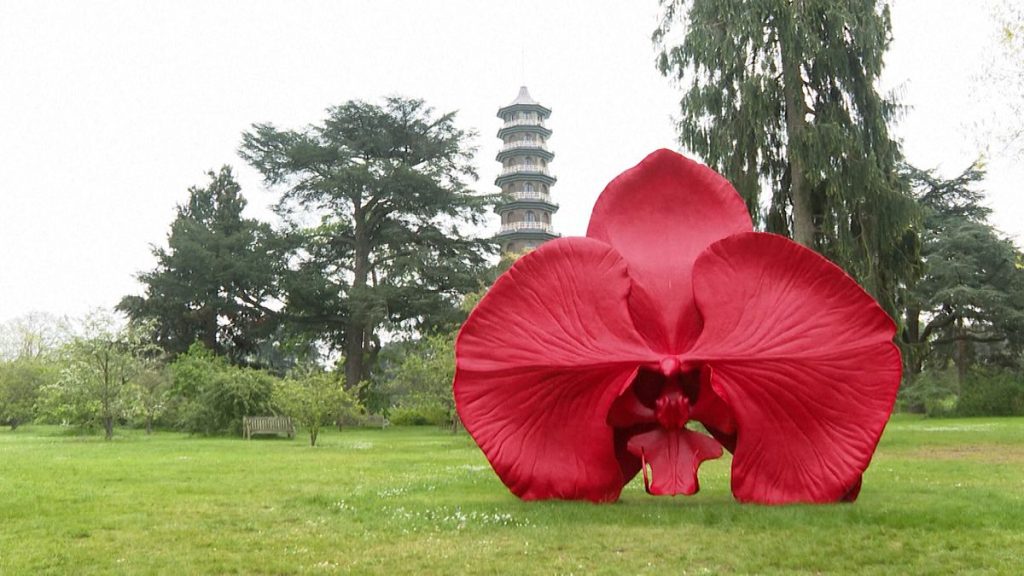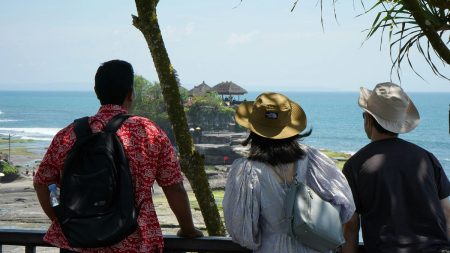The upcoming “Light in Life” exhibition at the 132-hectare Kew Gardens will feature sculptures made mostly of stainless steel spread among the lush vegetation on display. The exhibition, running from May 4 to September 29, aims to attract more visitors to the site while also highlighting the crucial role of plants in our lives. Artist Marc Quinn was approached by Kew to create the exhibition, which will showcase sculptures inspired by cancer drugs to underline our dependence on nature. One sculpture represents a turmeric specimen, similar to archived samples, while another depicts the Pacific yew, the source of the cancer treatment paclitaxel.
Quinn explains that his inspiration for the exhibition came from realizing the important work being done at Kew by hundreds of scientists and horticulturists. He saw the opportunity to create a whole show dedicated to the beauty and importance of plants, and worked with Kew to bring this vision to life. The exhibition not only serves as a showcase of Quinn’s artistry, but also as a means to raise awareness about the increasing risk of extinction faced by around 45% of flowering plants. Dr. Melanie-Jayne Howes, a biological chemistry scientist at Kew, emphasizes the critical need to preserve biodiversity, as losing plant species could mean missing out on potential solutions to challenges faced in health and the environment.
The sculptures in the exhibition will be positioned within the greenery of Kew Gardens, creating a harmonious blend of art and nature. Visitors will have the opportunity to experience the beauty of the sculptures while also learning about the vital role that plants play in our lives. The exhibition serves as a reminder of the interconnectedness of nature and humanity, with the sculptures of cancer drug-inspired plants serving as a poignant symbol of the ways in which we rely on the natural world for our well-being.
The “Light in Life” exhibition at Kew Gardens seeks to engage visitors in a conversation about the importance of plant preservation and the potential benefits that can come from protecting biodiversity. By showcasing sculptures inspired by cancer drugs, the exhibition underscores the critical role that plants play in providing solutions to health challenges. This unique blending of art and science serves to educate and inspire visitors about the beauty and importance of the natural world, encouraging them to consider their own impact on the environment and the need to protect our planet’s resources for future generations.
As visitors explore the sculptures at the exhibition, they will be encouraged to reflect on their own relationship with nature and the ways in which they can contribute to conservation efforts. By showcasing the beauty and importance of plants, the exhibition aims to raise awareness about the need to preserve biodiversity and protect endangered species. Through the lens of art, visitors will have the opportunity to deepen their understanding of the interconnectedness of all living things and the role that each of us plays in sustaining the delicate balance of the natural world.
In conclusion, the “Light in Life” exhibition at Kew Gardens promises to be a thought-provoking and visually stunning experience, inviting visitors to engage with the beauty and significance of the plant kingdom. By highlighting the ways in which plants contribute to our well-being and the challenges they face in the modern world, the exhibition serves as a powerful reminder of the importance of preserving biodiversity. Through the innovative sculptures created by Marc Quinn, visitors will be inspired to consider their own impact on the environment and take action to protect the natural world for future generations.









